 Photo: Masooma Mohammadi/IRIN  |
| Piped, but is it safe? |

DAKAR, 22 March 2010 (IRIN) - Diarrhoea- inducing waterborne microbes often go undetected in parts of the world with the highest rate of under-five deaths fromgastrointestinal infection.
According to the UN Children's Fund (UNICEF), lack of water safety regulations, inter-ministerial coordination and surveillance can paint a deceptively benign portrait of water quality.
"There are different interpretations of water safety among the line ministries [working on water issues], which makes it hard to draw a conclusion about water quality," Rolf Luyendijk, senior statistician for water and sanitation at UNICEF, told IRIN.
Taps, boreholes, covered wells or springs, as well as rainwater, are considered "improved" and “safe” water sources but they do not guarantee safe drinking water, he said.
"Water from a dug well may not meet microbiological standards and may still be deadly," he told IRIN.
Piped water came close
According to the World Health Organization (WHO), contaminated water contributes to more than two million deaths from diarrhoea each year, plus millions of other cases of waterborne diseases.
In 2004, UNICEF and WHO piloted rapid water assessments in Bangladesh, China, Ethiopia, India,Jordan, Nicaragua, Nigeria and Tajikistan, which showed that only piped came close to meeting international guidelines. Other water sources labelled as "improved" were about half-way compliant with the international guidelines.
Luyendijk told IRIN ministries working on water and sanitation need to improve data coordination and water quality surveillance to find out if investments are reaching the neediest.
"There is an enormous amount of money invested in boosting access [to safe water and sanitation] and those improvements have not reached the poorest quintile [20 percent]," he said.
While 84 percent of people living in low-income countries are reported to use improved water sources, eight out of 10 people without access live in rural areas, according to the latest WHO-UNICEF report on water and sanitation coverage.
According to the UN Children's Fund (UNICEF), lack of water safety regulations, inter-ministerial coordination and surveillance can paint a deceptively benign portrait of water quality.
"There are different interpretations of water safety among the line ministries [working on water issues], which makes it hard to draw a conclusion about water quality," Rolf Luyendijk, senior statistician for water and sanitation at UNICEF, told IRIN.
Taps, boreholes, covered wells or springs, as well as rainwater, are considered "improved" and “safe” water sources but they do not guarantee safe drinking water, he said.
"Water from a dug well may not meet microbiological standards and may still be deadly," he told IRIN.
Piped water came close
According to the World Health Organization (WHO), contaminated water contributes to more than two million deaths from diarrhoea each year, plus millions of other cases of waterborne diseases.
In 2004, UNICEF and WHO piloted rapid water assessments in Bangladesh, China, Ethiopia, India,Jordan, Nicaragua, Nigeria and Tajikistan, which showed that only piped came close to meeting international guidelines. Other water sources labelled as "improved" were about half-way compliant with the international guidelines.
Luyendijk told IRIN ministries working on water and sanitation need to improve data coordination and water quality surveillance to find out if investments are reaching the neediest.
"There is an enormous amount of money invested in boosting access [to safe water and sanitation] and those improvements have not reached the poorest quintile [20 percent]," he said.
While 84 percent of people living in low-income countries are reported to use improved water sources, eight out of 10 people without access live in rural areas, according to the latest WHO-UNICEF report on water and sanitation coverage.
Water safety plans
Luyendijk cautioned that data should never lead to complacence, citing Uganda as an example.
WHO recommends countries developwater safety plans and regulatory agencies to ensure not only safe water access but also water safety.
The UN Millennium Development Goal for water requires the reduction by half the proportion of people without sustainable access to safe drinking water and basic sanitation by 2015 but there are no binding global agreements on water safety. WHO has issued guidelines, which governments are encouraged to apply based on their means.
"What good is data without action?" said Luyendijk. "We monitor for action. To know is to act upon... People cannot live without water. But they can also die because of it."
pt/pm/oa
Luyendijk cautioned that data should never lead to complacence, citing Uganda as an example.
WHO recommends countries developwater safety plans and regulatory agencies to ensure not only safe water access but also water safety.
The UN Millennium Development Goal for water requires the reduction by half the proportion of people without sustainable access to safe drinking water and basic sanitation by 2015 but there are no binding global agreements on water safety. WHO has issued guidelines, which governments are encouraged to apply based on their means.
"What good is data without action?" said Luyendijk. "We monitor for action. To know is to act upon... People cannot live without water. But they can also die because of it."
pt/pm/oa





















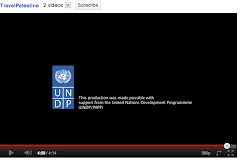





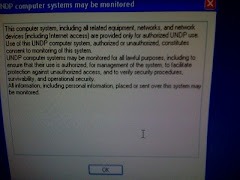








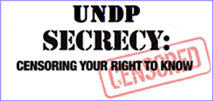
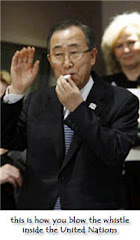
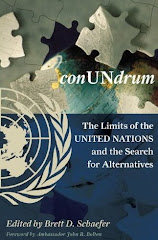

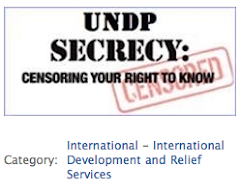

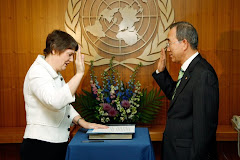





No comments:
Post a Comment